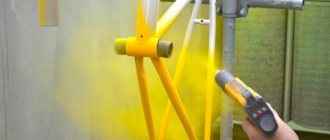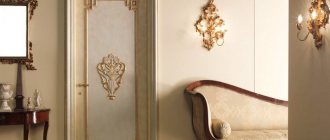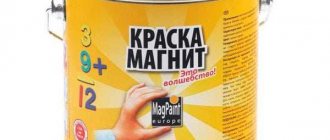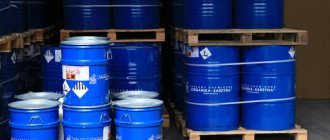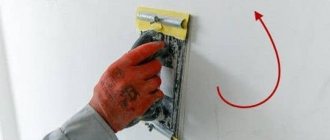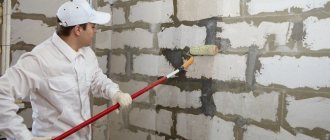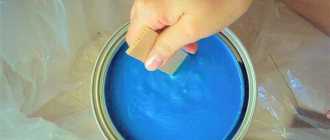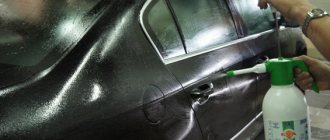Definition of the concept
Anyone who has ever visited a museum has probably seen greenish ancient coins, candelabra, sconces, etc. that have darkened over time. The coating covering these metal objects is called patina. The color of such film can vary widely. Most often, the patina formed under the influence of atmospheric factors during natural aging has a greenish tint. But sometimes it is brown, dark gray or bluish.
Selection of headset and decorative effect
Most often, when selecting a kitchen set, the designer suggests a golden or silver patina - it is ideal for classic furniture colors. But if you wish, you can choose a less universal option - black, gray, yellow and even red patina. It is better if non-standard solutions contrast with the basic tone of the headset, then they will look more attractive.
Recommendations for purchasing a kitchen with patina:
- It is worth finding out in advance what patination method the manufacturer uses. A more durable coating is one that is applied in several layers. It will look natural and expensive.
- For classics, choose a kitchen with a slight antique effect, where the patina is slightly darker than the main facades. For sets with complex milling, you should also not make the facades too dark, and a lot of gold and silver will look too flashy.
- If you decide to purchase a kitchen with a craquelure effect, it is important that a reliable varnish is applied in several layers. The fact is that such a coating itself is fragile and requires especially strong external protection.
- Gloss does not combine well with patina, since during the natural aging of wood there is no shine on its surface. Therefore, most kitchen sets that have undergone patination have a matte finish.
- The fittings must be appropriate. It is made artificially aged or made to match the facades in style and color.
- If you want to give the furniture more texture, before patination, the parts are brushed - treated with a hard brush to remove soft fibers. As a result, irregularities are created on the base, which look very good after patination.
The most inexpensive kitchen sets have simple, smooth facades without carvings or patterns. Therefore, if you have a limited budget, you can order such furniture and then decorate it yourself. The middle-priced option is a kitchen made of veneer, and MDF sets belong to the economy class. The most expensive are products made from solid beech, oak, ash and other hardwoods.
Chemical formula
The answer to the question: “Patina - what is it?” from a chemist's point of view it is very simple. The film formed on copper is nothing more than ordinary CuCO3. This could be, for example, Cu2(CO3)(OH)2 or Cu3(CO3)2(OH). The plaque of the first variety has greenish tints (malachite), the second - bluish (azurite).
Natural patination usually occurs over a fairly long period of time. Most often, a film of a substance such as copper carbonate on products, depending on conditions, forms within 5-25 years. If the item is in a humid environment, oxidation will, of course, proceed faster. In a dry room, the product will become covered with plaque later.
Initially, the concept of “patina” (what it is you now know) was applied only to the film formed on copper, bronze or brass. Later, the same word began to be used to describe the plaque that appears on wood, plaster, a bluish tint on blued steel, etc.
Application in furniture production
The presence of a noble touch with color transitions is only welcome in the modern world. It effectively emphasizes the beauty of forging and carving on wood products. Such items always attract attention and move from ordinary to the category of rare and antique. Experts distinguish a group of decorative patina. The imitation is created using stain and paint of the required color. Sometimes shades completely unusual for the material are used for this.
If you take wood, then the plaque that appears is most often due to it being damaged by fungus or rot . But this does not happen with wood of high density and hardness, which is insensitive to moisture. For example, when processing oak furniture, white or dark patina is used, and this indicates the antiquity of the product.
In furniture production, an artificial method is often used, because a natural coating will not appear soon. For greater efficiency, masters use two methods:
- chemical;
- mechanical.
for application on wood :
- thick - its consistency is similar to a paste, most often two-component, with its help reddish, light brown and golden shades are obtained;
- liquid - it looks like varnish, this composition gives the wood a yellowish or golden tint, characteristic of ash or oak;
- beveled varnish - it gives the effect of antiquity after application and drying, the varnish becomes covered with the finest cracks, like on antique wood products.
Patina application method
Craftsmen often combine several methods at once to get the most original, interesting look.
The patination technology is simple and differs in the number of layers of composition applied. First, the product is cleaned, after which brushing is done. The surface of the wood is brushed with a wire brush to remove soft fibers, just like on an antique piece.
The next stage is treating the furniture with a white primer and sanding the surface. White color is great for gray and light tones. For contrast, a transparent primer is used. Then a layer of varnish is applied and the product dries. Now is the time to apply the patina composition. Excess is removed after a short drying. The composition must penetrate into the deep pores of the wood. The next step is to apply another layer of dark patina. Excess is also removed depending on the desired effect. The final point is to coat the product with transparent varnish.
History of patination
Everyone knows that antiques look solid and prestigious. The reason for this is usually copper carbonate - patina. Since it takes a very long time to wait for this noble coating to appear on the surface of a particular product, various techniques have been developed to obtain it artificially.
The first hand-aged items began to be made back in the 14th century in Florence. For patination, gypsum was then used to fill voids on the surface of wooden products. After the alabaster mixture had dried, gold foil was glued onto the product. Then everything was varnished.
The technology of artificial patination of metals was also developed quite a long time ago. Ancient craftsmen noticed that the coating formed when fat burns out on metal utensils delays its rusting. Therefore, a film with approximately the same chemical composition began to be applied to sculptures and other artistic castings.
Patina on metal: step-by-step instructions
Patination is often carried out on parts that are exposed to heat during operation - the external parts of the barbecue, fireplace elements, as well as furniture fittings, various corners and linings. In addition to increasing attractiveness, such actions help protect surfaces from damage and rust. The most popular colors for metal patination are gold, silver and white.
To work you will need:
- acrylic paint,
- a set of pieces of gold leaf,
- synthetic brush,
- alcohol,
- glue for gold leaf,
- finishing varnish for gold leaf.
First, you need to degrease the metal part with alcohol and wipe it with a rag. Using a brush, you should paint the surface with acrylic paint, applying it in 2 layers, and after drying, lubricate the base with glue and randomly arrange the pieces of gold leaf, carefully press them with a brush. Then you need to remove the excess from the edges of the product. It is important that the material does not completely cover the surface, and areas of paint are visible in different places. At the end of the work, the part must be coated with finishing varnish.
Patina for wood and metal will serve as an excellent design technique, giving simple products nobility and special charm. Patination is easy and very exciting - everyone should try it!
Where is patination used?
Today, this technique is also most often used to decorate furniture intended for residential premises. Sometimes patination is used to artificially age decorative items in the offices of business people. Forged products finished in this way also look very impressive. Metal stair railings, fences, balcony parapets, etc. can be decorated with patination.
This technique is also very often used for artificial aging of copper and brass coins. As in the past, patination can sometimes be seen on cast metal (steel, bronze and cast iron) decorative objects. It happens that souvenir “antique” coins, medals, coats of arms, etc. are made in this way. Very often, artificial patina covers copper chandeliers, sconces, decorative plates for sockets, etc.
Types and techniques of patination
Patina can be divided into two large groups: artificially created and natural. Artificial plaque can be created using different methods, which are suitable for solid wood, veneer, and MDF. According to the style, patination can be:
- thin layer;
- filling;
- aging with rubbing.
The latter option involves not the usual application of a surface coating, but the rubbing of special products into the structure of the wood. There are two main patination technologies used in industry:
- membrane-vacuum pressing;
- manual application of paints and varnishes.
At home, the second method is used, which involves coating with acrylic paints, stains and special varnishes.
Coating furniture with acrylic
This method is considered the simplest for patination of kitchen facades. You just need to purchase high-quality paint of a suitable shade that will go well with the main tone of the set (for example, a golden patina is ideal for a beige kitchen).
After preparation and priming, a base tone is applied to the front side of the facade, which forms the basis and levels the surface. After drying, apply a second layer of patina paint using light, jerky strokes, mainly along the bulges and depressions.
The smooth surface of the parts remains uniform, due to which the set will look as if touched by a touch of antiquity. You can also do it another way: sand the base coat with sandpaper, then lightly go over it with an acrylic patina compound.
Artificial cracking
This technique is called craquelure and is more complex to perform. It involves creating a network of cracks and aging the surface with an artificial “patina.” After gradually applying beveled varnish, when the previous layer has not completely dried, cracks appear on their own. After the base has completely dried, it is rubbed with a patination compound so that the space between the cracks becomes darker. To consolidate the result, the facades are coated with finishing varnish.
Staining
After applying a water- or wax-based stain, the wood becomes darker, grayer, and its internal structure will be clearly defined. It is important to choose the right color of the composition so that it makes the wood look like it has aged. The stain is only suitable for natural wood; it makes no sense to use it on MDF or veneer.
Artificial patina: aging with paint
This gentle technique is very often used for patination of furniture, panels, metal grilles, etc. Paint aging is performed as follows:
- The metal or wood product is thoroughly cleaned and degreased.
- Its surface is sanded and sometimes slightly bleached.
- The actual patination is carried out. Acrylic paints are usually used. Such compositions are resistant to adverse environmental influences and are inexpensive. Other, more expensive dyes can be used to decorate small items.
- The surface is being polished. In this case, the protruding details of the relief are highlighted, and the recesses remain dark. The result is a “patina” coating that is uneven in tone.
- The product is coated with a protective layer of varnish or oil (for wood).
Advantages and disadvantages of patinated kitchen
Patina refers to a coating that forms on wood and metal due to prolonged contact with oxygen. In the presence of patina, the main color looks brighter, and light darkening and small cracks appear on the surface, making the furniture look like antique. You can create such a coating yourself; it is only important to use methods and coatings that do not harm wood or metal.
Advantages of patina on kitchen furniture:
- Additional protection. The use of patination technology allows you to cover the elements of the set with a durable film, as well as varnish, which is usually applied as a finish. As a result, facades become stronger, last longer, and are less susceptible to damage.
- Practicality. Thanks to the protective coating, kitchen maintenance will become much easier; the facades can be washed without harming their condition. Stains on patinated surfaces are less noticeable than on regular ones.
- Aesthetics. Patination makes furniture look interesting and expensive. Even a simple kitchen set made of MDF will look luxurious and stylish.
- Possibility to restore products. Old furniture that has already lost its external luster can be restored using patination. This will allow you to seriously save money on the purchase of new furniture, especially if all the work is done yourself.
It should be remembered that applying the film does not increase the fire resistance of facades, so when cooking you will need to strictly observe safety precautions. The stove must be placed at some distance from elements coated with flammable paints. It is also not recommended to patina work surfaces: with frequent and strong mechanical impact they will deteriorate.
Aging of forged, embossed and cast products by chemical means
Patination with reagents is often used in the manufacture of metal decorative products. In order to obtain a noble film on things such as embossing, sculptures, gratings, etc., a variety of chemicals can be used. It is very difficult to create a natural green coating on copper, bronze and brass objects. But you can get a patina of other interesting colors. For example, sometimes copper products are processed with the following composition:
- sulfur liver - 2-3 g;
- table salt - 2-3 g;
- water - 1 liter.
When copper products come into contact with the resulting solution, a light patina of a pleasant gray shade appears on them.
For artificial aging of brass decorative items, the following composition is often used:
- sodium sulfide salt (fixer for photographic film) - 60 g;
- nitric acid - 5 g.
As a result of mixing these ingredients, a violent reaction begins. The color of the patina in this case is almost black. Masters try to use this solution as quickly as possible (maximum 20 minutes). Otherwise, it loses its properties and becomes unsuitable for patination.
As you can see, substances that are quite dangerous to human health are often used to age metal decorative items using chemical methods. Therefore, such patination is carried out only with gloves and with the windows open.
Natural plaque color
Numismatists have always had a special attitude towards the state of patina. It is believed that a product that has a certain color of plaque has its own beauty, and most importantly, a valuable history of its origin. Patina - what is it, and what color can it be?
The shade of oxidation depends on the composition of the alloy from which the product was made, as well as on its location and territorial climate. For example, objects that have a green tint were once in contact with water containing salt. This could be the seabed or a nearby area where the air contains evaporated salty condensation that settles on the products.
The natural patina on coins may have a brown color, acquired when the bronze comes into contact with the ground for a long time. This chemical process produces copper oxide and can produce shades of pink, red and purple. Subsequently, oxidation proceeds to the next stage - tenorite, at which the patina turns black.
The blue or turquoise hue is formed upon contact with copper sulfate crystals. Copper carbonate imparts malachite or lapis lazuli tones to the patina. By the color of the plaque you can determine whether the coin was in a fire. Moreover, whether the product was directly on fire or at a distance from it. And also how the fire was extinguished: smoldering or was flooded with water.
Where is thermal patination used?
This technology is very often used to make beautiful steel products. For example, bluing is done using a very simple method. The metal is placed in the fire and kept there until it turns red. Then it is very quickly dipped into a container with machine oil. As a result, a black patina coating almost instantly forms on the steel surface.
This is how artificial “patina” is applied to metal and wooden surfaces. We found out what this is. By and large, natural patina is a physical reflection of the decades, centuries, and sometimes millennia that have passed since the product was manufactured. Various types of artificial aging technologies are used mainly for the manufacture of all kinds of decorative products that can make the interior of a living space solid and prestigious.
Types of patina
Patina varies in shades and decorative effect. The choice of its specific type depends on the style of the kitchen, the color design of the walls, floors, textiles and other components, and on the basic tone of the set itself.
Golden and silver patina
Patination in the colors of gold and silver is considered a classic option, and the most common. The metallic finish goes well with white and black kitchens, as well as furniture made in light wood tones. It is recommended to cover the top of the gold and silver patina with matte varnish, then it will look even more advantageous.
Contrasting patina
Contrast will help to gracefully highlight the carved patterns on the wooden facades of furniture. Usually the set is made in a lighter shade, and the antiquity on the facades is saturated in color. Most often, frames, corners, and joints of parts are darkened.
Craquelure (crackle)
This patination option is perfect for country, Provence, and shabby chic styles. To implement the technique, a special craquelure varnish is used, which, after drying, creates a network of small cracks, and the surface resembles antique paint.
Aging with bitumen wax
Bituminous wax, unlike varnish, has a hard consistency. As the manufacturer notes, bitumen wax is used to dull the shine of gold, thereby giving the item a warmer shade and an aged look. Apply with a soft cloth, sponge or brush. Excess is removed with clear wax and left to dry for at least 12 hours. With further use and care of the product, unfixed bitumen may wear off, so the manufacturer recommends covering the result with shellac varnish.
What interior style should you choose for a kitchen with patina?
Since a touch of antiquity makes the furniture look antique, this solution will not fit into every type of design. For example, patination is not suitable for furniture in modern styles: techno, hi-tech, modern. This technique looks best when decorating a kitchen in such directions as classic, country, Provence, vintage, shabby chic and antique style.
Classic
The main qualities inherent in classics are aristocracy and elegance, which can be significantly enhanced by the use of patina on kitchen furniture. The noble touch of antiquity here will either be a self-sufficient decoration, or will be successfully combined with carved details and interesting patterns.
The top cabinets under the ceiling look the most beautiful. Combined cabinets are no less suitable for the classic style: they alternate solid facades with glass parts and lattice sections. If there is a lot of decor, fittings, and decorations, it is better to make the patina more restrained in color. A modest kitchen will be decorated with patination with gold and silver.
Provence
In this style direction, aged elements and details darkened by time are also welcome. Matte bases, dark patina on a light background, and interesting accessories are especially suitable for Provence. Most often, crackle technology is used here, giving the surface the appearance of cracked paint.
Acrylic paints
To achieve the patina effect, you don’t have to buy expensive compounds. You can use regular acrylic paints, creatively combining them in color. The versatility of these paints makes it possible to use them for patination of any surface.
The surface to be decorated is first prepared and painted in the main color. Then we move on to the stage of aging with acrylic patina. By mixing acrylic paints, the desired color is selected and diluted with water. You can add a drying retardant for acrylic paints. Apply to the surface with a brush so that the paint enters all the recesses in the relief. Without waiting for it to dry, wipe off the excess with a cloth and evaluate the result. By adding a drying retardant, you have complete control over the process. If you get more patina, you can easily remove the paint from the protruding parts of the relief with a damp cloth. If it turns out not to be enough, after drying you can repeat the step and the color of the patina will be more saturated.
There is no specific technique for creating a patina; only experience and imagination will help you develop your own patination techniques to obtain the best results.
You can download a step-by-step photo master class on creating a patina effect on this page
Wax polish
Wax has a dense consistency. Can be used as a finishing coating or as a patination composition. Apply with a brush to any surface, including untreated wood. After application, excess is removed with a cloth. After drying, polish with a soft cloth. Thanks to this treatment, the surface becomes silky and takes on an aged appearance.
The photo shows a wooden surface treated with dark Stamperia wax. The brushed boards are rubbed down with wax, then white talc is applied with a brush. Excess is removed with a soft cloth. After 12 hours it is polished, thus obtaining a color contrast between the white talc and the dark wax.
I hope the article will be useful, inspire you and give you new ideas.
Advantages and disadvantages
The advantages of patination include the following:
- Wear resistance and long service life, since the patina coating creates additional protection not only from excess moisture and temperature changes, but also from abrasion;
- High practicality - there is no need for any special care, and dirt is less noticeable on such a coating, as are minor damages;
- Original and unique design - thanks to a combination of different compositions, dimensions, colors, decor of sets and various types of patination;
- Affordable price, which is much less than the cost of real antiques.
- In addition, a kitchen with any patina - gold, silver, black, white, colored - directly from the factory will cost less.
The disadvantages include the ability to ignite easily, so it is necessary to pay increased attention to electrical wiring and being near open flames.
Silver and other metallic patina finishes
Metallic finishes are extremely popular right now, and the ability to mix and match different metallic colors to suit specific needs is essential. They are also great for commercial applications where applying a natural patina or rusty metal would be expensive. Finishing walls with a patina with a metallic effect will also be an excellent solution not only for classic, but also for modern decor.
VIDEO: How patina changes the interior
Patina in the interior
Noble antiquity
DIY kitchen patination
Applying patina to kitchen cabinet doors yourself is a completely feasible task. The technique is not complicated and will allow you to update boring furniture in a short time. Patination requires strict adherence to technology:
- Sand the facades using sandpaper with grain No. 180.
- Treat the surfaces with a barrier primer using a spray bottle if we are talking about MDF facades, and with stain if we are dealing with natural wood.
- Apply self-leveling varnish, dry, then spray the patina (unevenly, more clearly along the edges, bulges).
- Sand the surface.
- Cover the facades with colorless matte varnish.
Usually, only the outer part of the facades is patinated, but if desired, work can also be done on the inside of the products. The set will look elegant and unusual, while the created protective film will extend its service life for several years.

